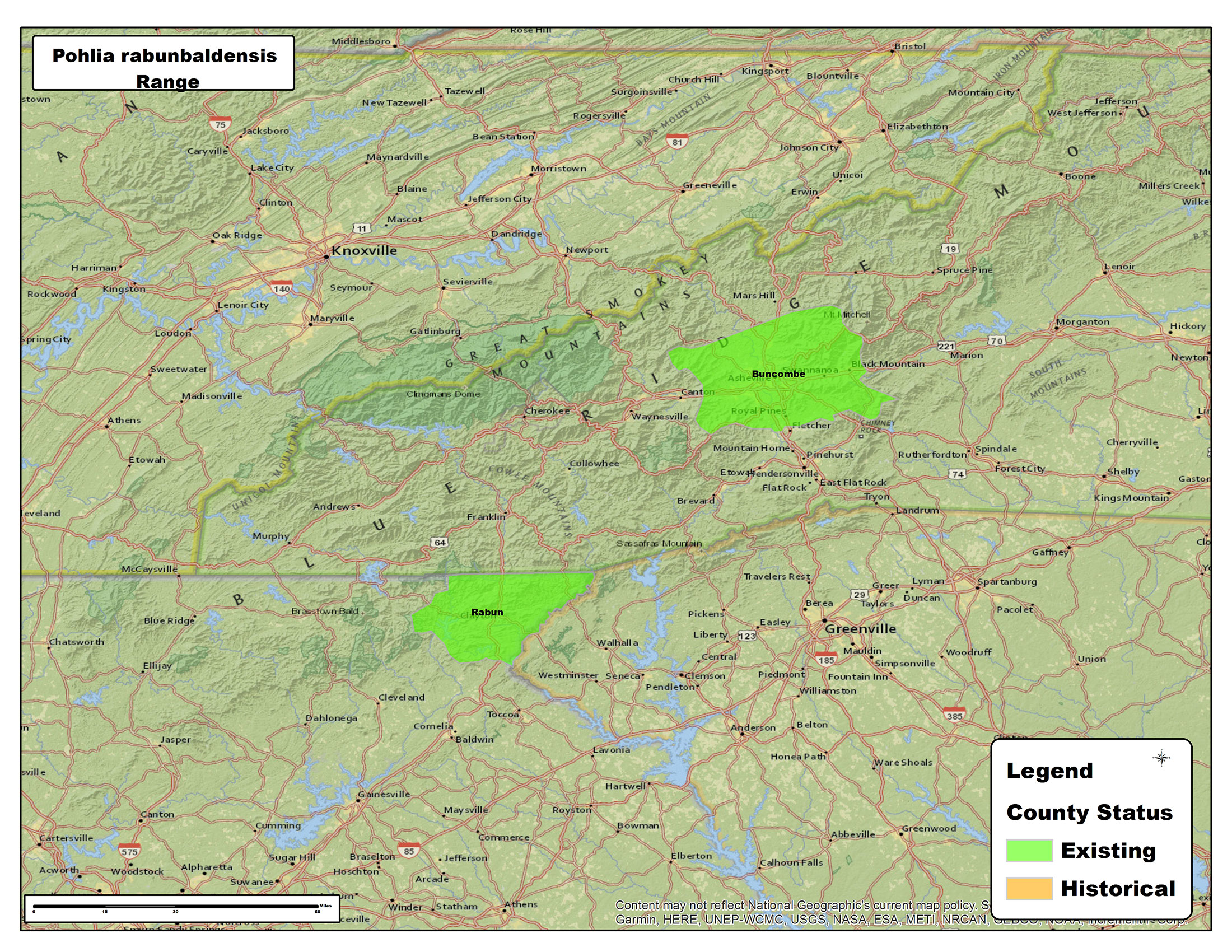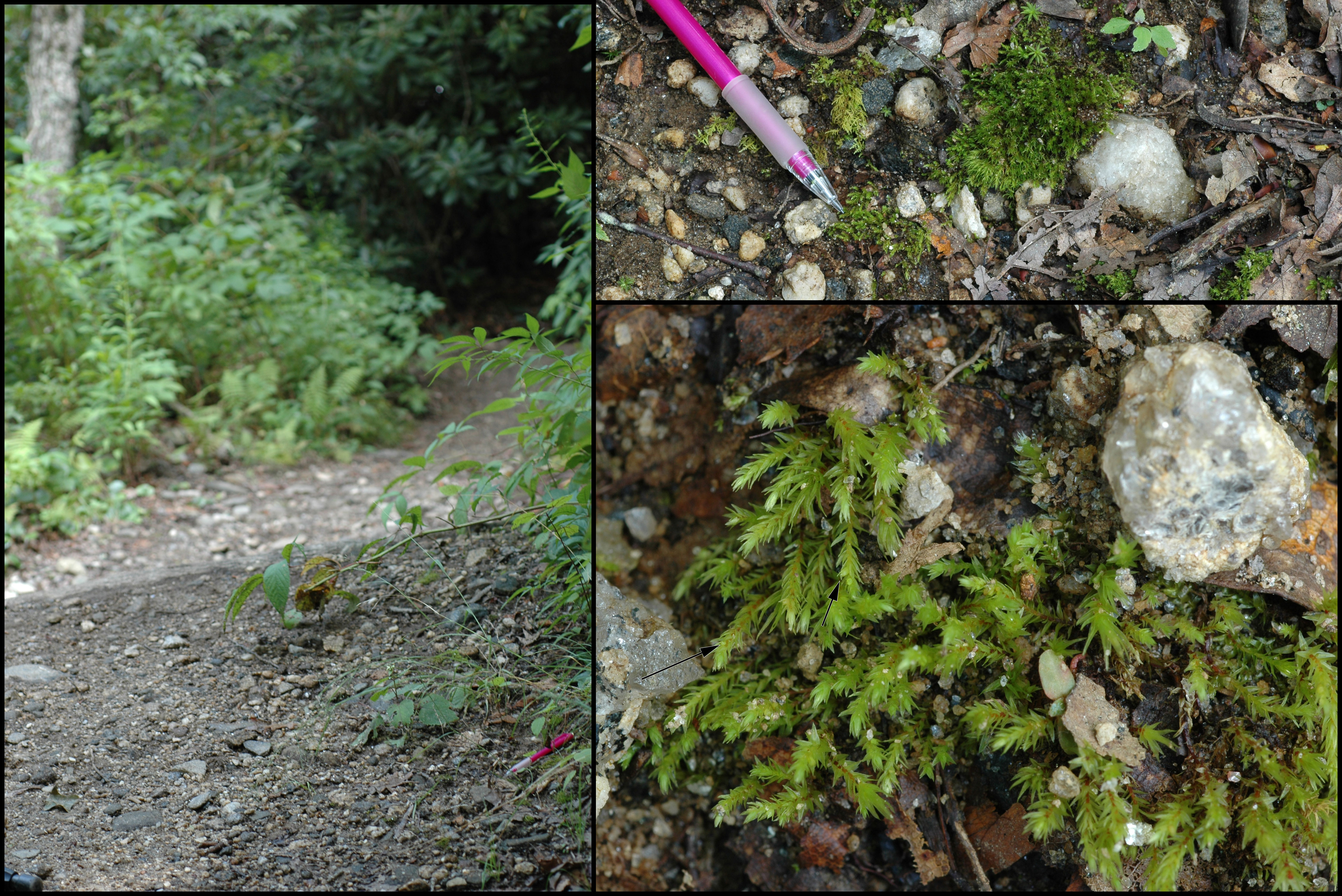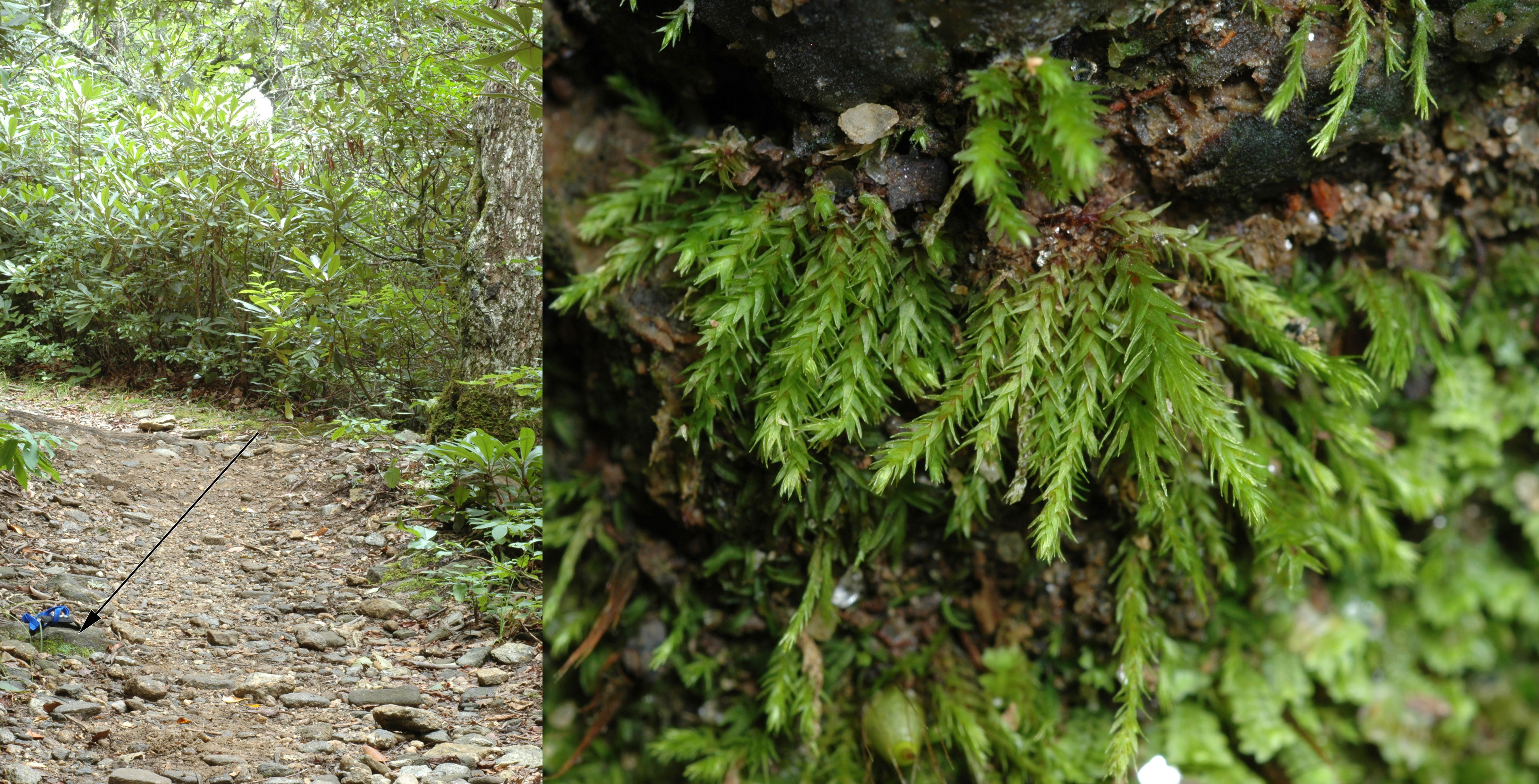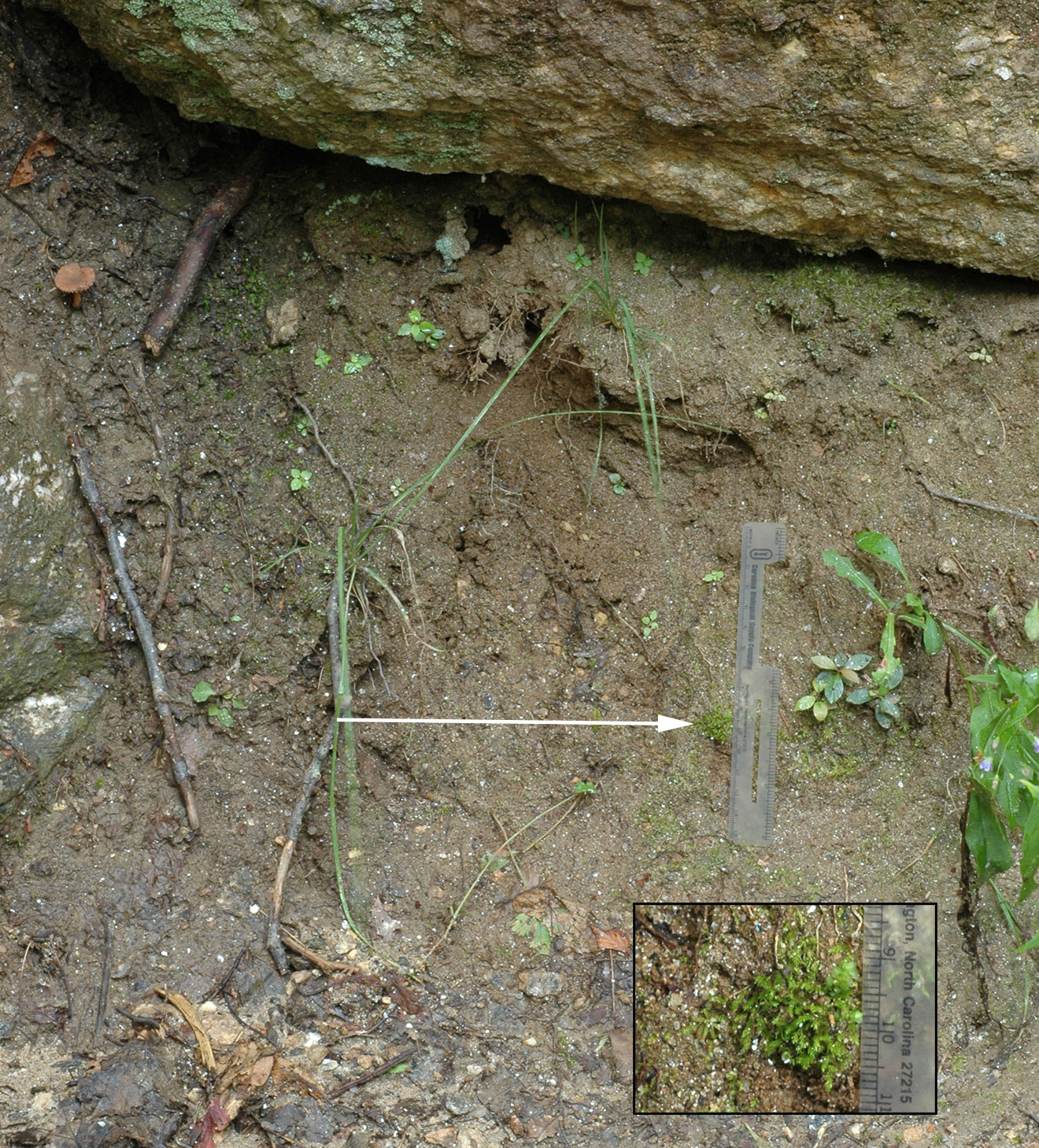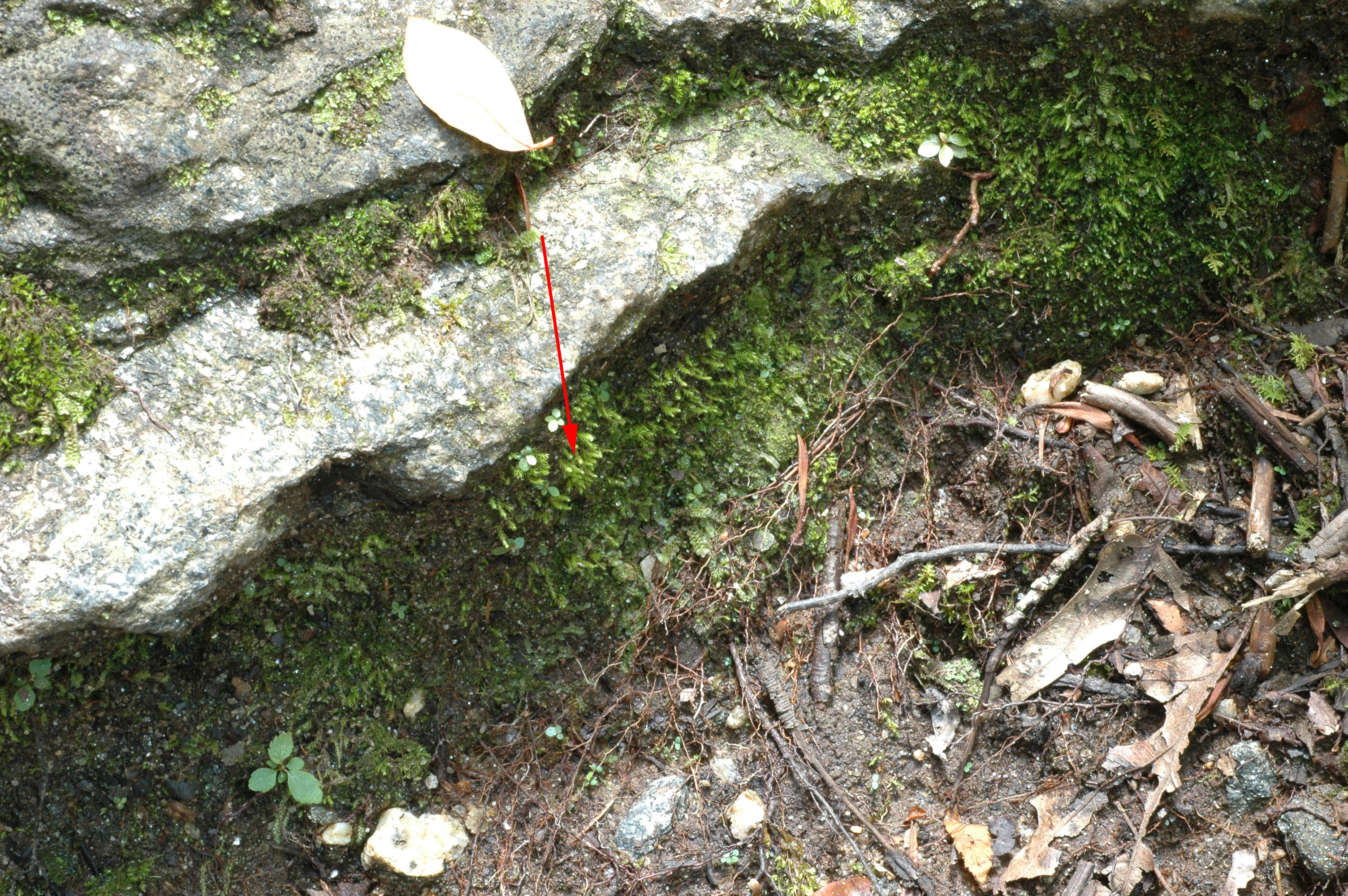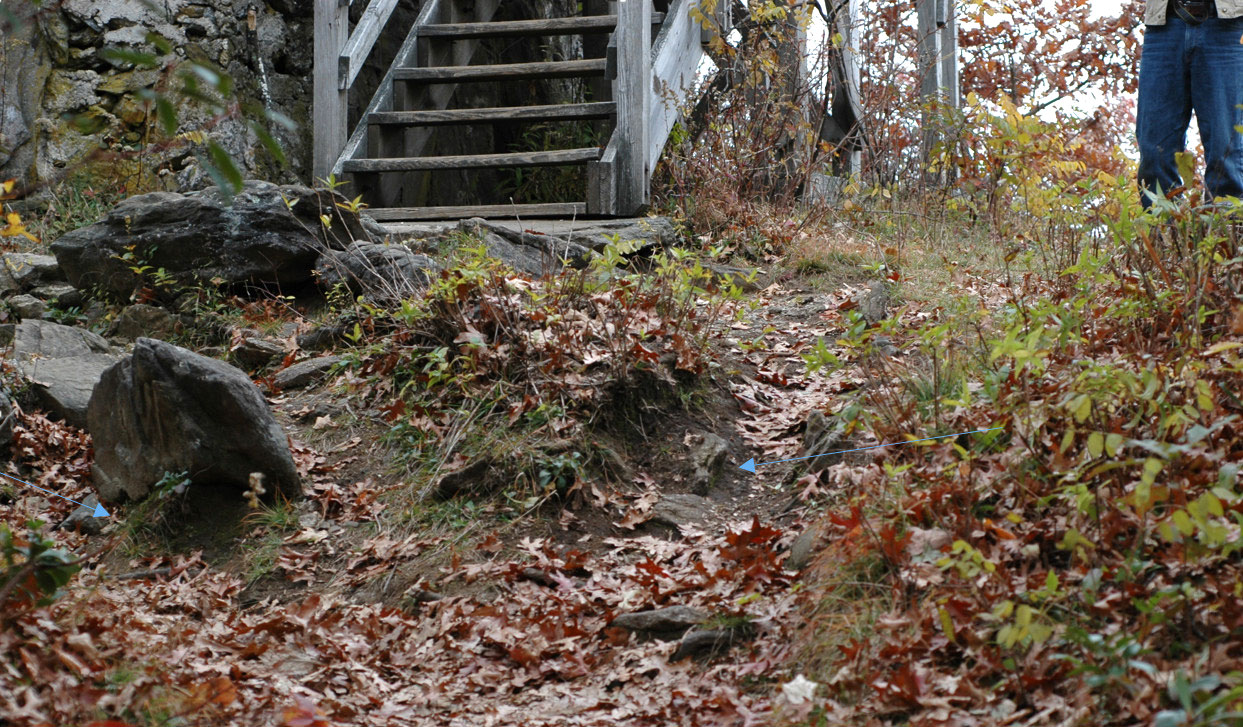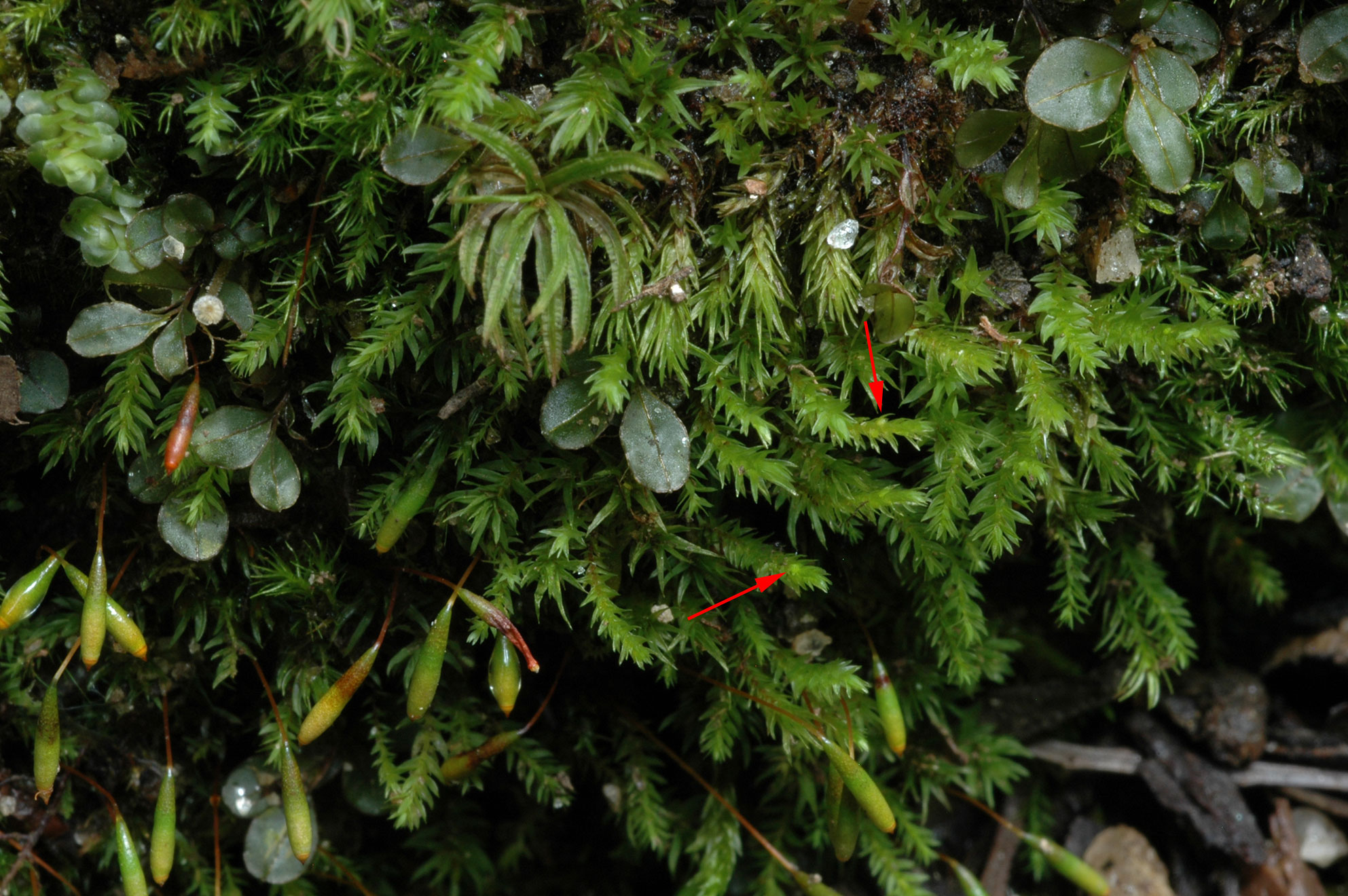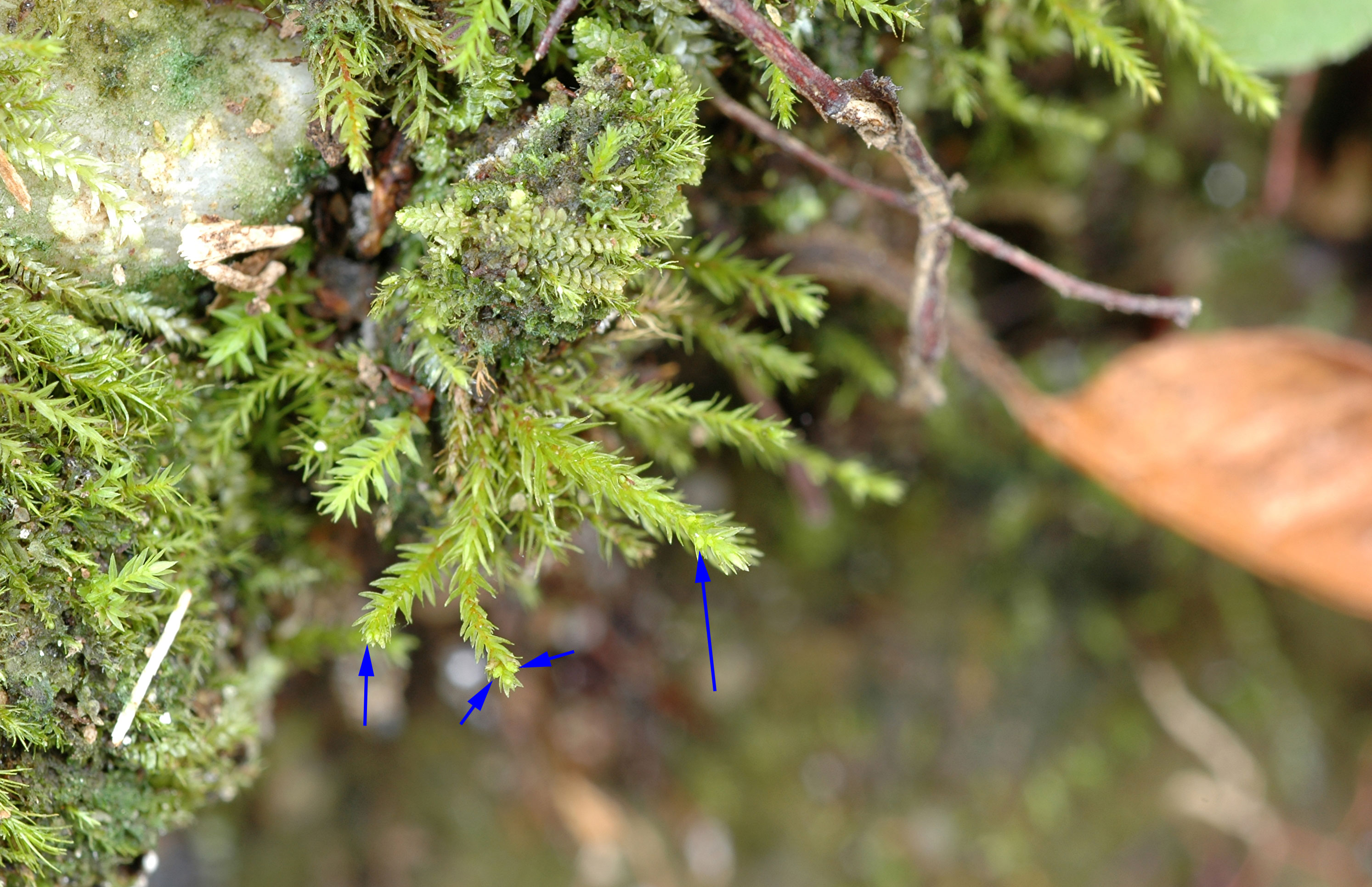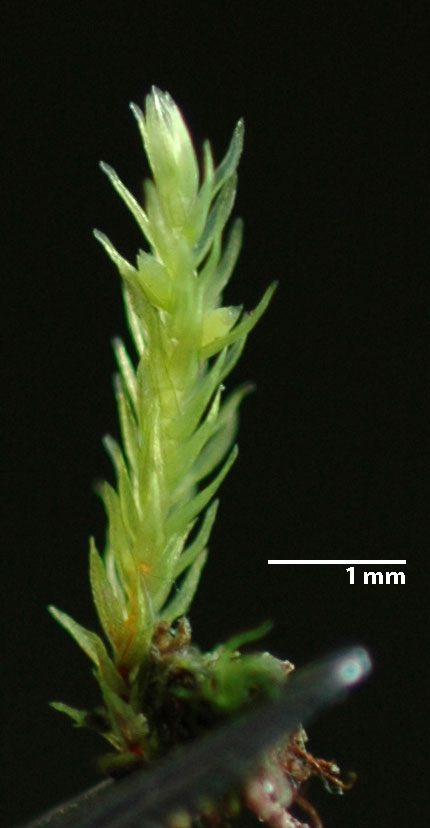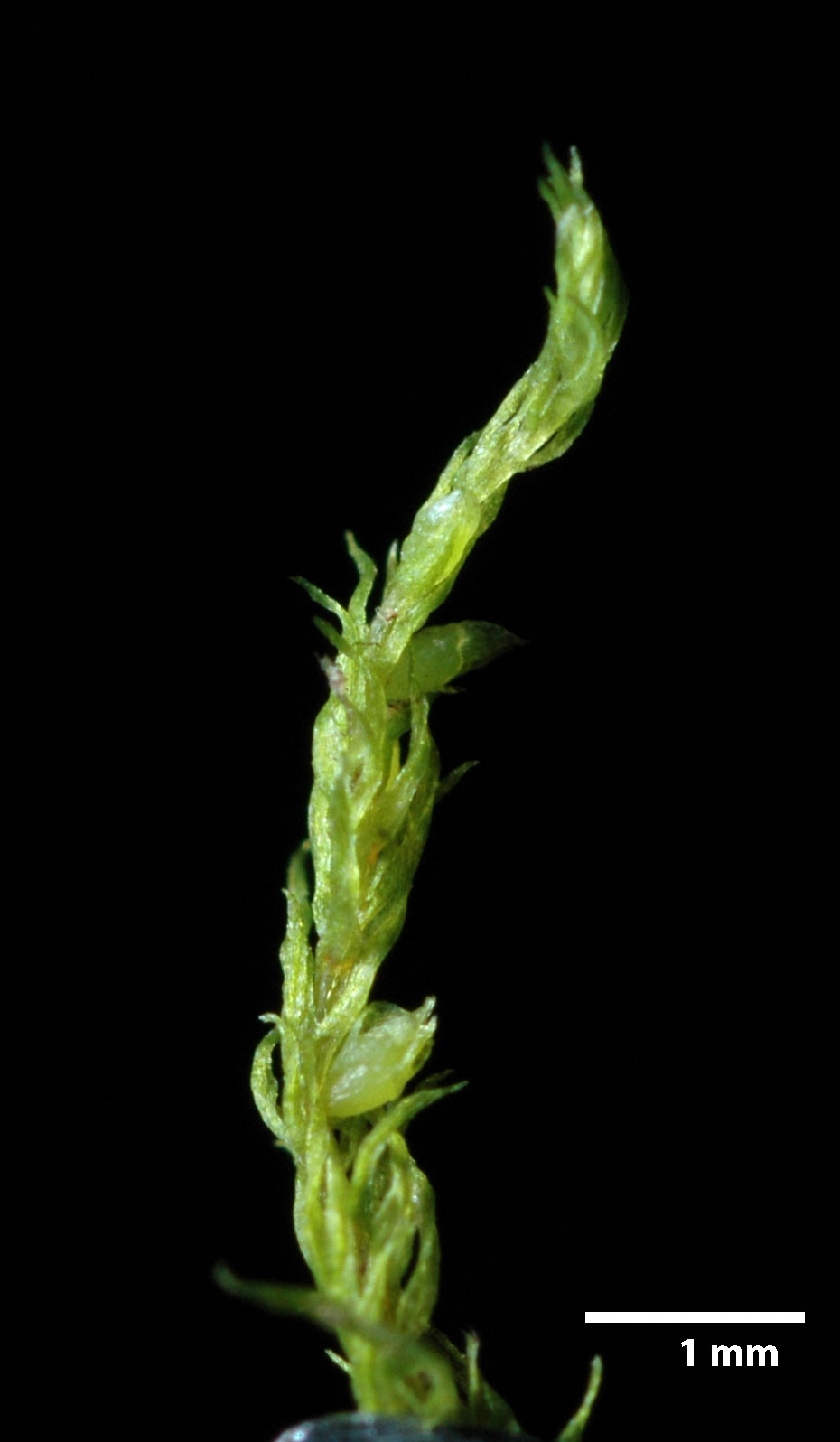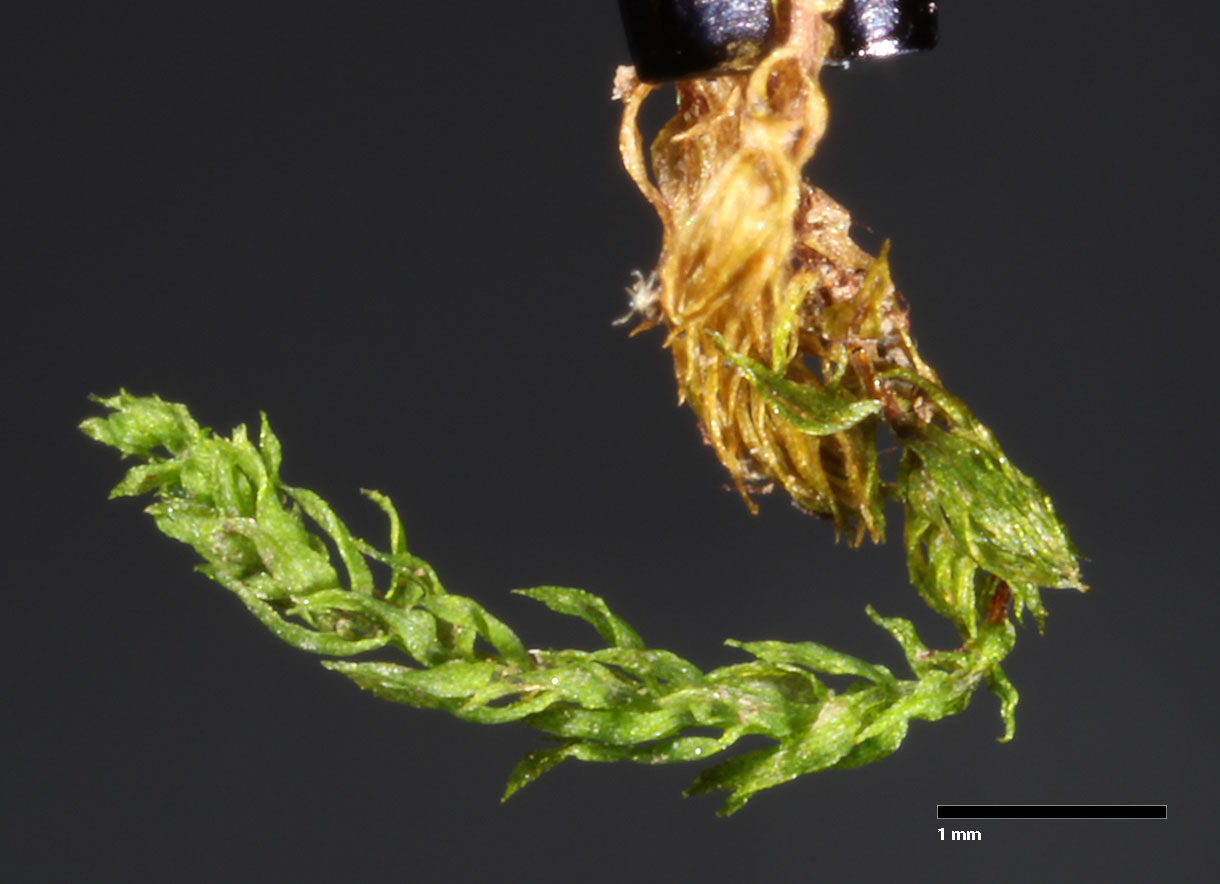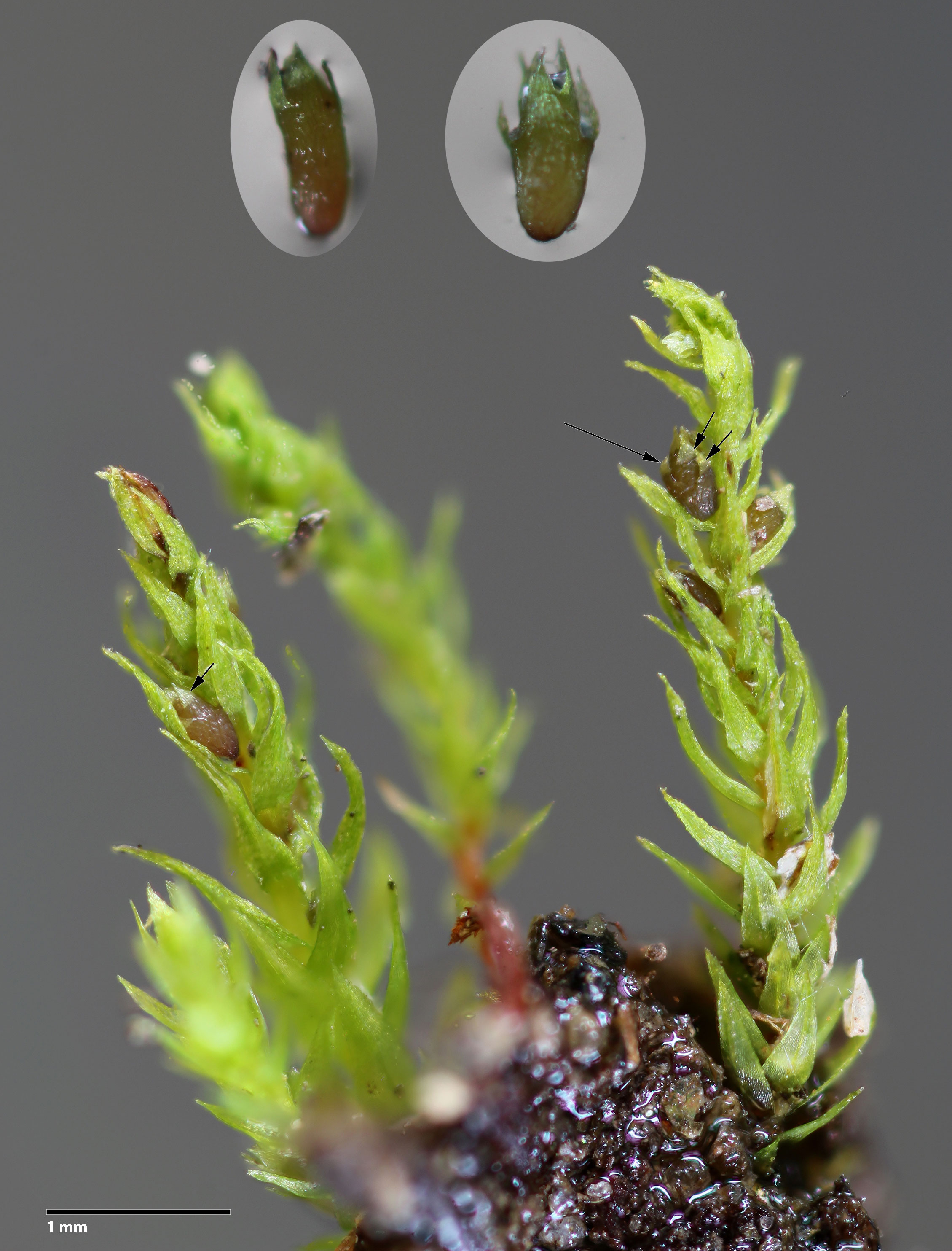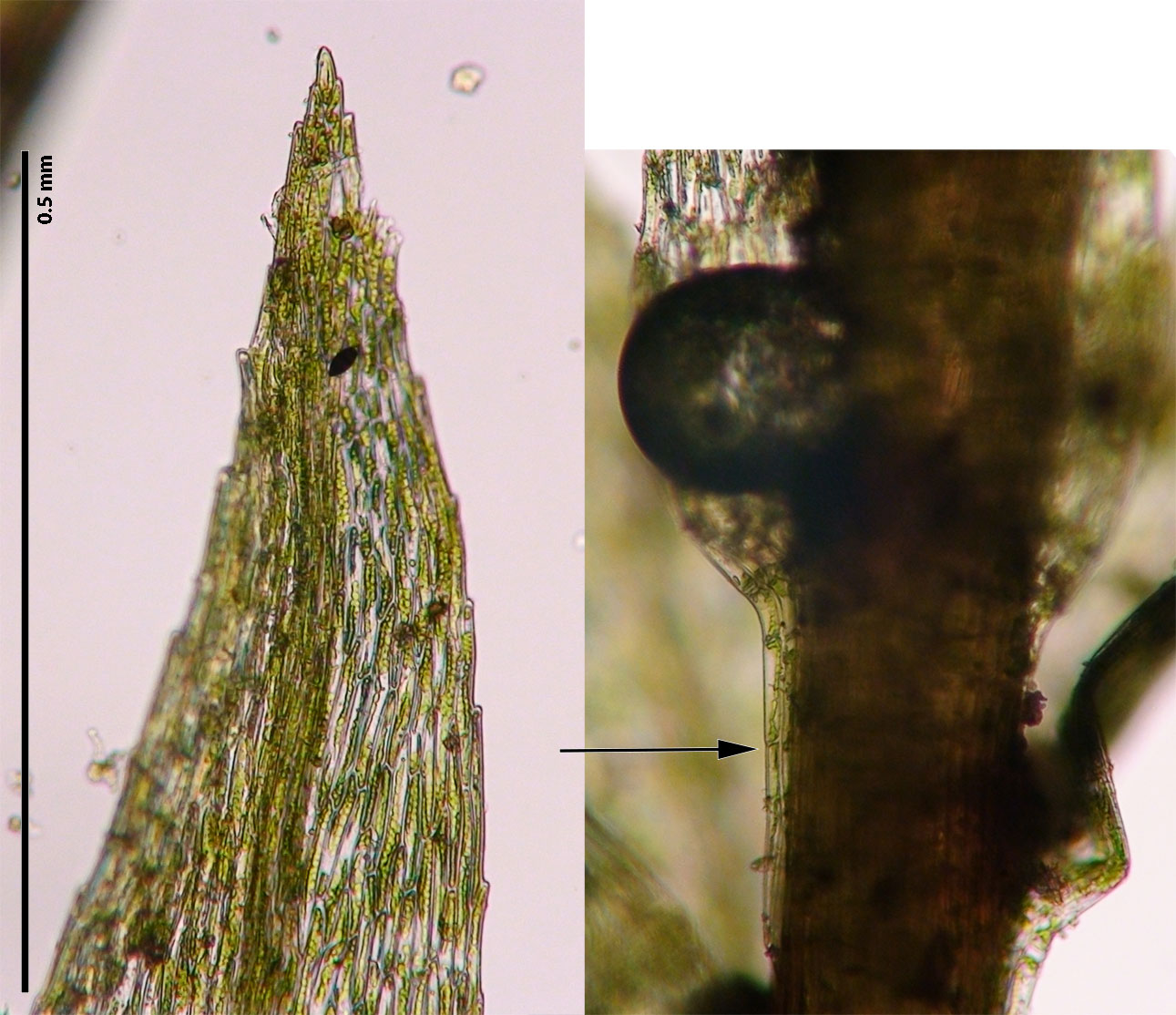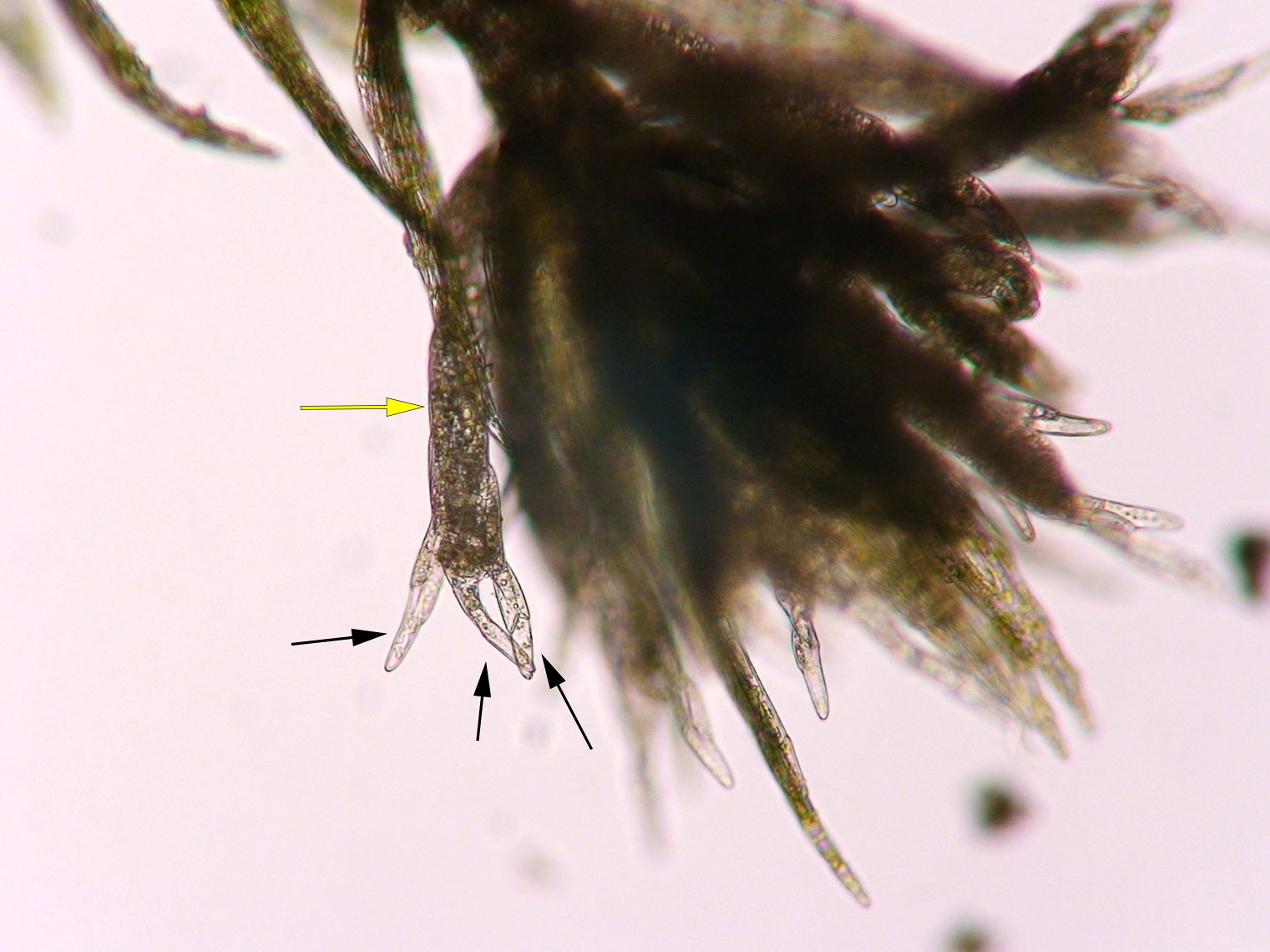Pohlia rabunbaldensis A.J. Shaw
Family: Mielichhoferiaceae
Synonyms
none
NatureServe Conservation Status
G1
Distribution
Endemic to the Southern Appalachians. Georgia, North Carolina.
Habitat
Northern hardwood forests dominated by Quercus rubra, scattered Picea rubens present at the North Carolina site. North facing slopes, on exposed mineral soil along trails; high elevations (4200 – 4900 ft) (Shaw 2014; Shevock and Shaw 2005).
Bryophytes found within a few centimeters of P. rabunbaldensis at Rabun Bald include: Liverworts: Calypogeia, Cephalozia bicuspidata, Diplophyllum apiculatum, Solenostoma gracillimum, Scapania nemorea. Mosses: Atrichum, Diphyscium foliosum, Ditrichum sp., Isopterygium elegans, Pohlia annotina, Pohlia nutans, Rhizomnium punctatum, and Thuidium.
Brief Description and Tips for Identification
Forming loose tufts on soil, sometimes intermingled with other mosses. Shoots mostly unbranched, to 1 cm long, upright, often at a low angle to the substrate. Leaves lanceolate, costate, ca. 1 mm long, erect to spreading. Leaves are dull and slightly contorted when dry. Bulbiform gemmae green becoming orange-red when mature, occurring singly in a few leaf axils of some shoots. Gemmae with triangular leaf primordia near the gemma apex and also lower on the body of the gemma.
Dioicous? Only archegoniate female plants known.
Pohlia rabunbaldensis is similar to Pohlia drummondii, a North American-European species not found in the Southern Appalachians. Both species have similar bulbiform gemmae. P. rabunbaldensis plants are dull and leaves are slightly contorted when dry, whereas in P. drummondii plants are glossy and leaves are unaltered when dry (Shaw 2014). Dull leaves that become slightly contorted when dry are characters shared with Pohlia annotina with which P. rabunbaldensis may occur. The gemmae of regional P. annotina are elongated with leaf primordia restricted to their apex (Crum and Anderson 1981).
Positive identification of Pohlia rabunbaldensis requires gemmae. No other regional moss possesses bulbiform gemmae. Gemmae may not be present until summer and fall. Shoots without gemmae may be indistinguishable from Pohlia annotina (when without gemmae) and small, sterile forms of Pohlia nutans.
Salient Features
- Dull plants
- Leaves slightly contorted when dry
- Bulbiform gemmae in leaf axils
References
Crum, H. A., and L. E. Anderson 1981. Mosses of Eastern North America (Vol. 1). Columbia University Press.
Shaw, A.J. 2014. Mielichhoferiaceae. In: Flora of North America, North of Mexico 28: 190-214.
Shevock, J. R., and Shaw, A. J. 2005. Pohlia robertsonii and P. rabunbaldensis (Bryopsida, Mniaceae), two new species from the western and eastern United States. The Bryologist, 108(2), 177-182.
Acknowledgment
Some text and images on this page were originally prepared for the Georgia Department of Natural Resources in 2010, contract number 605-090427 with Paul G. Davison and used here with permission.
